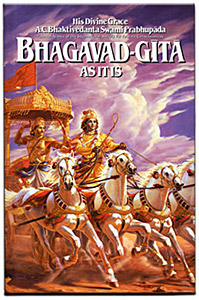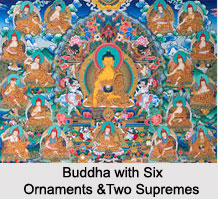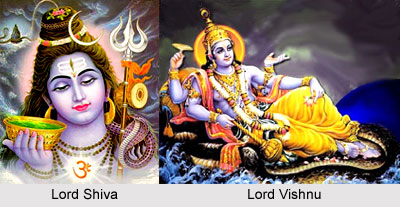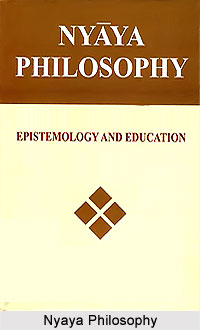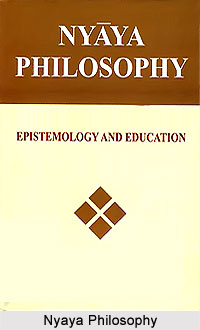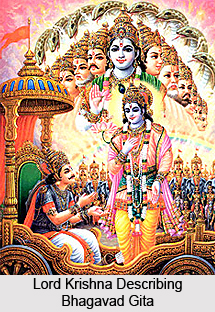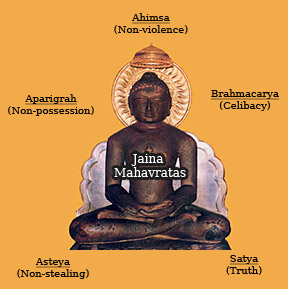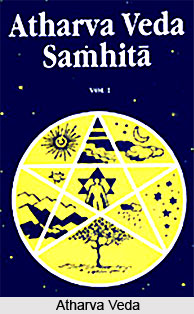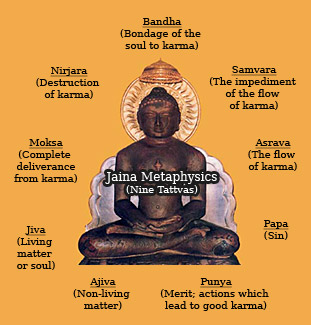The third query was made by Kausalya to sage Pippalda. He had asked the master from where the Prana or life force is born; how does he enter the body; how does he dwell by dividing himself; how does he leave; how does he support the external things and the things related to body within. In the beginning the student had asked about the cause of the Prana. Rather it can be said that as Prana is the source of the Total Energy, the disciple tried to find out the cause of the energy. The student in fact not only wants to find the source of energy but also tries to find out as to how the energy is capped within the physical body. At the same time as Prana leaves the physical body at one point of time, the student also tries to find out how the Prana gets divorced from the body of individuals.
With regard to the first question of Kausalya which was from where the Prana is born, Risi Pippalada had said that Prana is born of the Atman or the Self. As shadow is born of man so is Prana born of Atman. Then gradually with actions of minds it enters into the body. The Risi had said that as energy and matter is the Hiranyagarbha or the Total Mind, it is evident that Prana rises from the Atman or the Pure Conscious Centre within individuals which is also the life spark in each individual.
At this juncture, the Guru had said that Prana is to atman what reflection is to a person. Rather it can be said that Prana is the shadow of the Atman. The next question of Kausalya which follows is how Prana enters the body. When the Risi had answered this question he had said that the Prana has come to be expressed within the body with the aid of willing, wishing and desires which are all activities of the mind.
The question which is posed by Kausalya next was how Prana dwells by dividing himself. To this the Risi had said that the nucleus of all activities and energy in the body is the ego center or Ahankara which gets its work done by the upa-pranas. The Guru answers that the main activities of the body together constitute what is generally known as the vital activities of a living man and these activities can be categorized into five divisions. The Risi has said that the upa-pranas are distributed in different parts of the body and carry on various functions for an individual.
In this section the Master had said that Prana resides within the heart, by the term heart, the Guru had meant the mind. Rather he wanted to say that the Pure Consciousness that is reflected within the mind is known as the ego-centre. Pippalada in this section had said that the activities which go within individuals are extended and enlarged when it comes to the outer world. In fact he tried to say that the outer world is a replica of our inner world. In order to make his students realise the relationship between the inner and the outer world, the Guru had advised his students a special method of Upasana. According the Guru the method of Upasana is absolutely inevitable for an individual who wants to seek the Absolute Truth and wants to reach the zenith of True Self Experience.
According to the Master only with the process of Upasana can the mind be free from all kind of grossness and with the aid of Upasana the mind is able to get exposed to the sunlit planes and vaster expanse of the Universe. Gradually the mind becomes purified in the process and only a purified mind can transcend beyond all kind of ordinary experiences and hence can rise to greater heights of God-vision and Self-experience.
Then the rishi states that when the mind becomes subtle with the aid of the Upasana it feels that it has no more experience to gather from the physical form and as a result it leaves its physical form and departs. This stage of the body is called the death of the body. The Guru had said in this section of the Prashnopanisad that at the time of death all the sense organs of an individual body stops functioning but that is not because they get impaired rather it is because they no more receive the vitality of the Prana.
The Master in this chapter had said that when the mind withdraws the senses into itself it is guided by the next field of activity. The next field of activity in turn depends on the thought processes of an individual on the death bed. The thought process on the death bed on the other hand is not controlled by an individual rather it is a result of all the activities of an individual during his lifetime.
The Risi had also explained that he who meditates upon the Truth will find relationships of this world to be intimate. As Risi Pippalada concludes this section of the Prashnopanisad he had said that when an individual is able to realise that Prana resides within an individual he becomes "immortal". The individual in the process comes to understand his absolute identity with the Total Mind, the Hiranyagarbha, and remains one in identification with the Creator until his creation-cycle ends. Compared with the short and finite nature of the mortal, the state of the Total Mind-hood Hiranyagarbha avastha is certainly a state of immortality in a relative sense.


